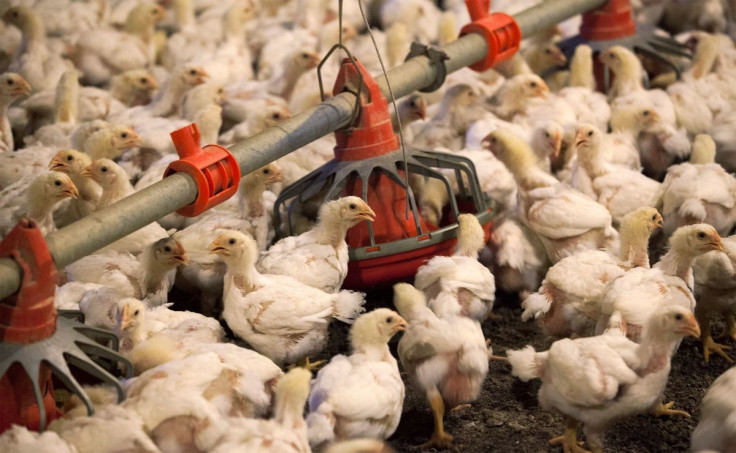What Is Avian Flu? First Bird Flu Case Detected In Human In US In Largest Recent Outbreak
The first U.S. infection of avian flu in a human has been detected in a man under the age of 40 in Colorado in what the Centers for Disease Control and Prevention (CDC) has said is the largest outbreak since 2014-2015.
Avian flu, also known as bird flu or H5N1 flu, is spread by infected birds through their saliva, mucous, and feces. In humans, the H5N1 flu can get into the eyes, nose, or mouth or is inhaled through droplets or dust in the air.
Symptoms of avian flu infections in humans can range from no symptoms at all to eye redness or mild flu-like upper respiratory issues or pneumonia, which may require hospitalization, according to the CDC.
Fever, feeling feverish, cough, sore throat, runny or stuffed nose, muscle or body aches, headaches, fatigue, and shortness of breath or difficulty breathing are also symptoms of an infection in a human. Less often, people may experience diarrhea, nausea, vomiting, or seizures, according to the agency.
The infected man, who is an inmate at the state correctional facility in Delta County, Colorado, was working on a commercial farm in Montrose County with infected poultry and was in close contact with the birds.
The inmate was working at the farm as part of pre-release employment program. He was provided personal protective gear while he was working on the farm.
Currently, he is mostly asymptomatic and is only showing signs of fatigue. The man has been receiving the influenza antiviral drug Tamiflu and is in isolation.
The infected birds have been euthanized and properly disposed of, the CDC and Colorado Department of Public Health and Environment said.
To date, more than 24 million birds have been killed in the U.S. since February due to avian flu infections, USA Today reported.
H5N1 has been detected in the U.S. in commercial and backyard birds in 29 states since late 2021, the Department of Agriculture reported. Wild bird infections of the avian flu have been identified in 34 states during this same timeframe, according to the agency.
This is the only case of avian flu in the U.S. at this time, according to the Colorado Department of Public Health and Environment. However, a case of H5N1 flu was detected in a human in the U.K. in January who also had direct contact with birds who were infected. They were also asymptomatic.
The CDC warns people to avoid contact with birds that appear ill or are dead. They should also stay away from surfaces contaminated with feces from birds. Those that must handle dead or sick poultry are urged to wear gloves and wash their hands afterwards. Respiratory protection is also recommended.
The CDC did say that it is safe to eat and cook poultry and poultry products in the U.S., adding that cooking to an internal temperature of 165˚F kills bacteria and viruses, including the avian flu.
The CDC said more information about the avian flu outbreak will be provided as it becomes available.

© Copyright IBTimes 2025. All rights reserved.





















